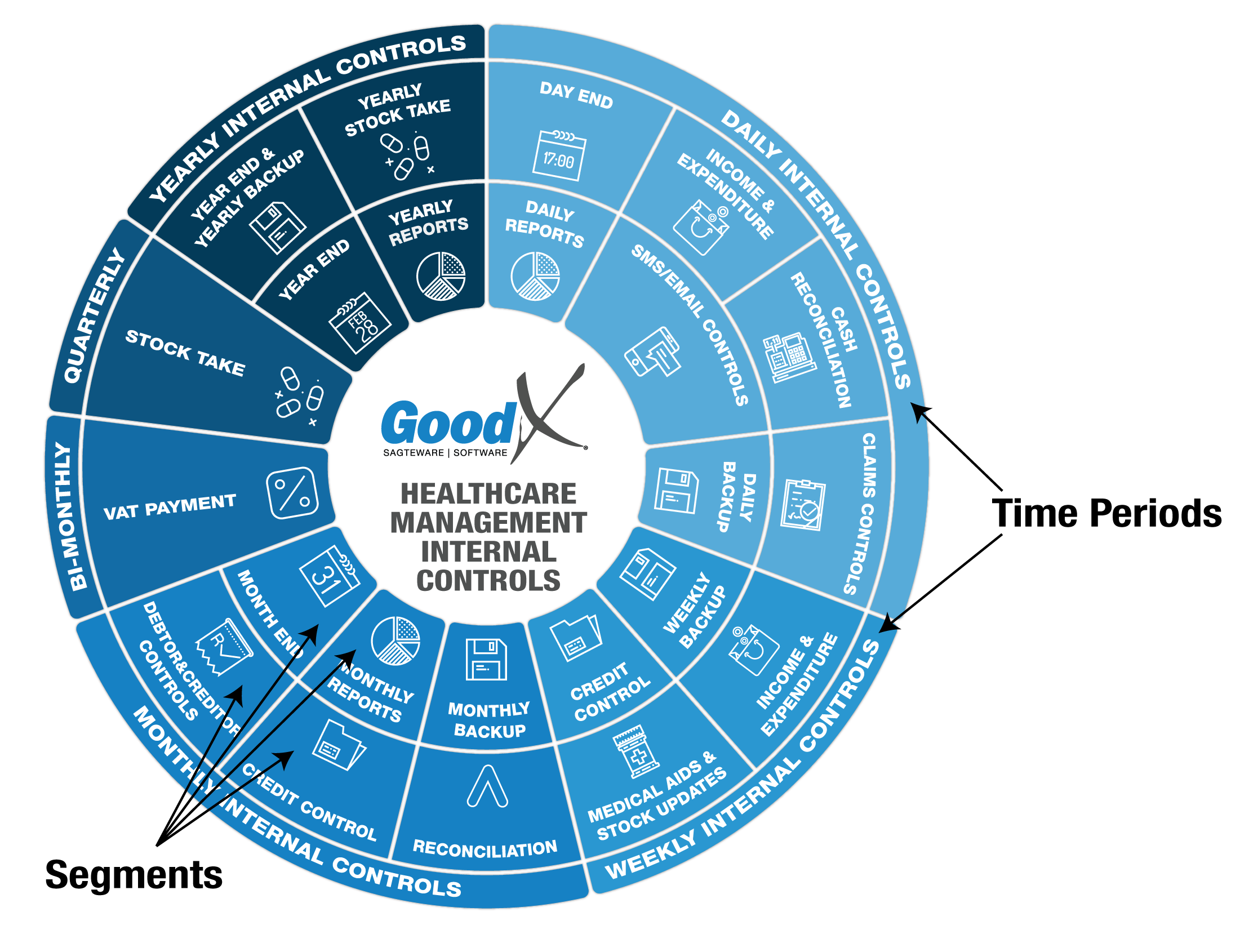Best Practice Guidelines: Healthcare Management Internal Controls
Best Practice Guidelines: Healthcare Management Internal Controls

Copyright © 2020 GoodX Software. All rights reserved.
GoodX online Learning Centre
learning.goodx.co.za
1. Introduction to Internal Controls in a Healthcare practice
What are internal controls?
Internal controls are the measures implemented by management to achieve financial and operational goals to:- Protect assets from accidental loss or theft;
- Ensure the reliability of financial information;
- Ensure compliance with laws affecting the operations of the practice; and
- Promote efficient and effective operations.
Why are internal controls necessary?
Any healthcare practice is a business which needs to be run effectively and efficiently in order to provide top healthcare to patients and be financially beneficial for owners, practitioners who work on commission and personnel who earn
salaries. If all parties involved in the healthcare practice work toward the productivity of the practice, all parties benefit.
This Healthcare Management Internal Controls guideline book is produced to guide you through our suggested approach to putting controls into place for your business to remain profitable, controlled and reportable.
Who needs to become acquainted with this information?
These guidelines are of particular importance for the owner of the healthcare practice and the practice manager (or person who fulfils the role of the practice manager) who needs to check that tasks are completed and reports are generated and analysed.
Every practitioner must be able to set up their own reports, generate the necessary reports and be involved in analysing and interpreting the data so that they can have first-hand knowledge of what is happening in the practice.
How to implement internal controls?
There are some critical business processes that need to be completed for the healthy operation of the practice. The following diagram illustrates the core processes in a healthcare practice:

Within each segment of the diagram, e.g. Appointments, there are numerous tasks to be performed to complete the process. It is not within the scope of this book to discuss these tasks as they are described in our practice management guidelines books. This book is focused on how the completion of those tasks can be properly checked.
The Healthcare Management Internal Controls diagram provides an overview of the internal controls that need to be performed on a regular basis to check if the critical business processes were completed successfully and correctly.
The control measures are performed by following these actions:
- Implementing & following best practice processes described in this book;
- Generating the relevant reports available on the GoodX software system;
- Analysing & interpreting the information in the reports; and
- Responding to the information, by eg making corrections on the system OR implementing management decisions based on the information to make the practice more profitable.
How to read the Healthcare Management Internal Controls diagram?
The internal controls diagram is divided into six time periods (daily, weekly, monthly, etc.) during which the internal controls are to be performed. They follow each other clockwise on the diagram, starting at the top right.
Tasks and reports that share a common emphasis are grouped together into segments. For example, cash reconciliation includes petty cash and cash collected at the cash registers. (The common denominator is to control the cash in the practice.)
Segments are grouped together within the applicable time periods so that the practice manager will be able to see at a quick glance which controls must be performed during which time period. Some controls are duplicated in more than one time period, e.g. some reports are used to be able to complete daily corrections and thereafter to finalise the reporting at the end of the month to be sent to auditors.
As the financial year proceeds, following the diagram's flow will assist the practice manager in completing all the necessary tasks and reporting to complete the whole year's internal controls.
